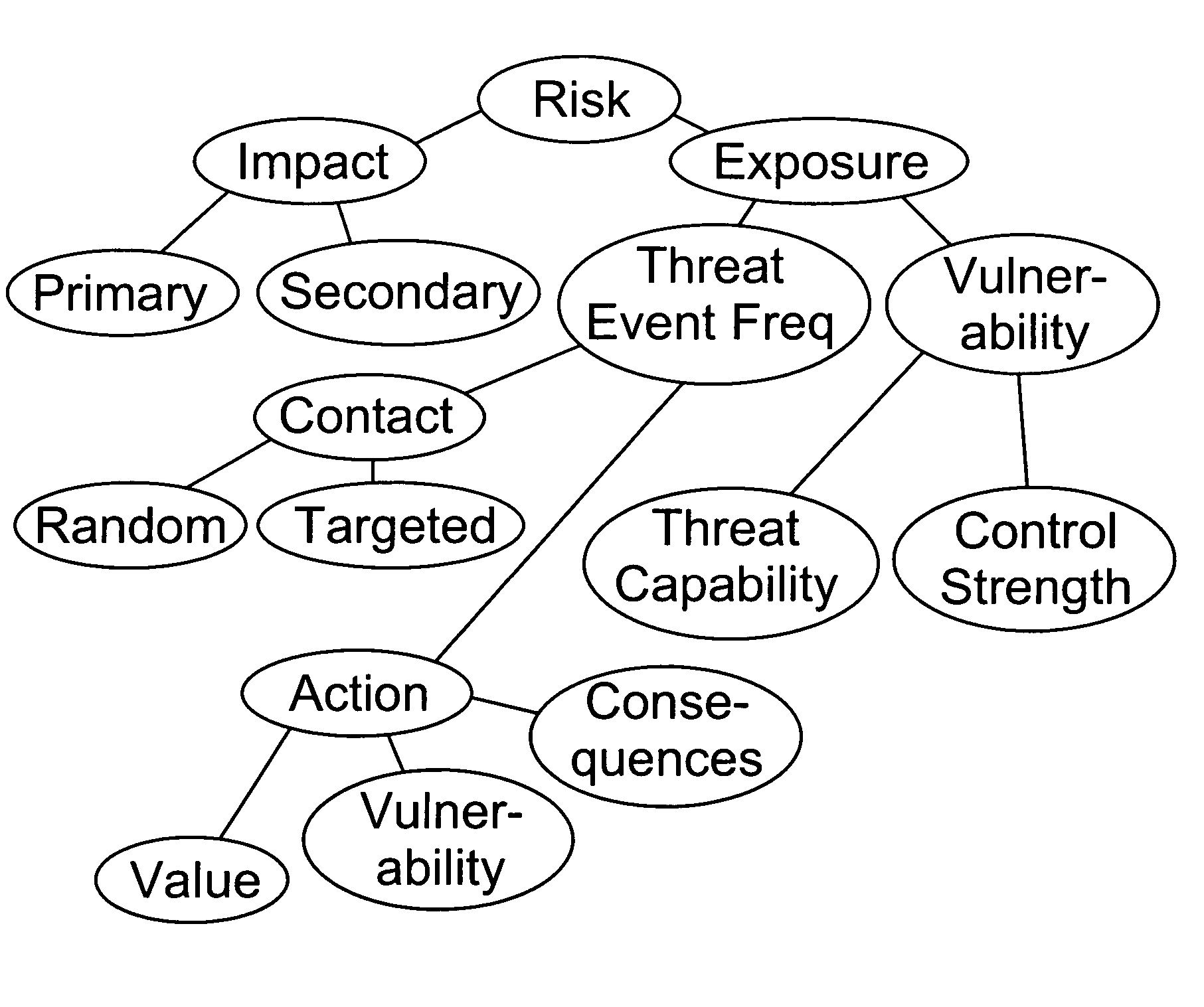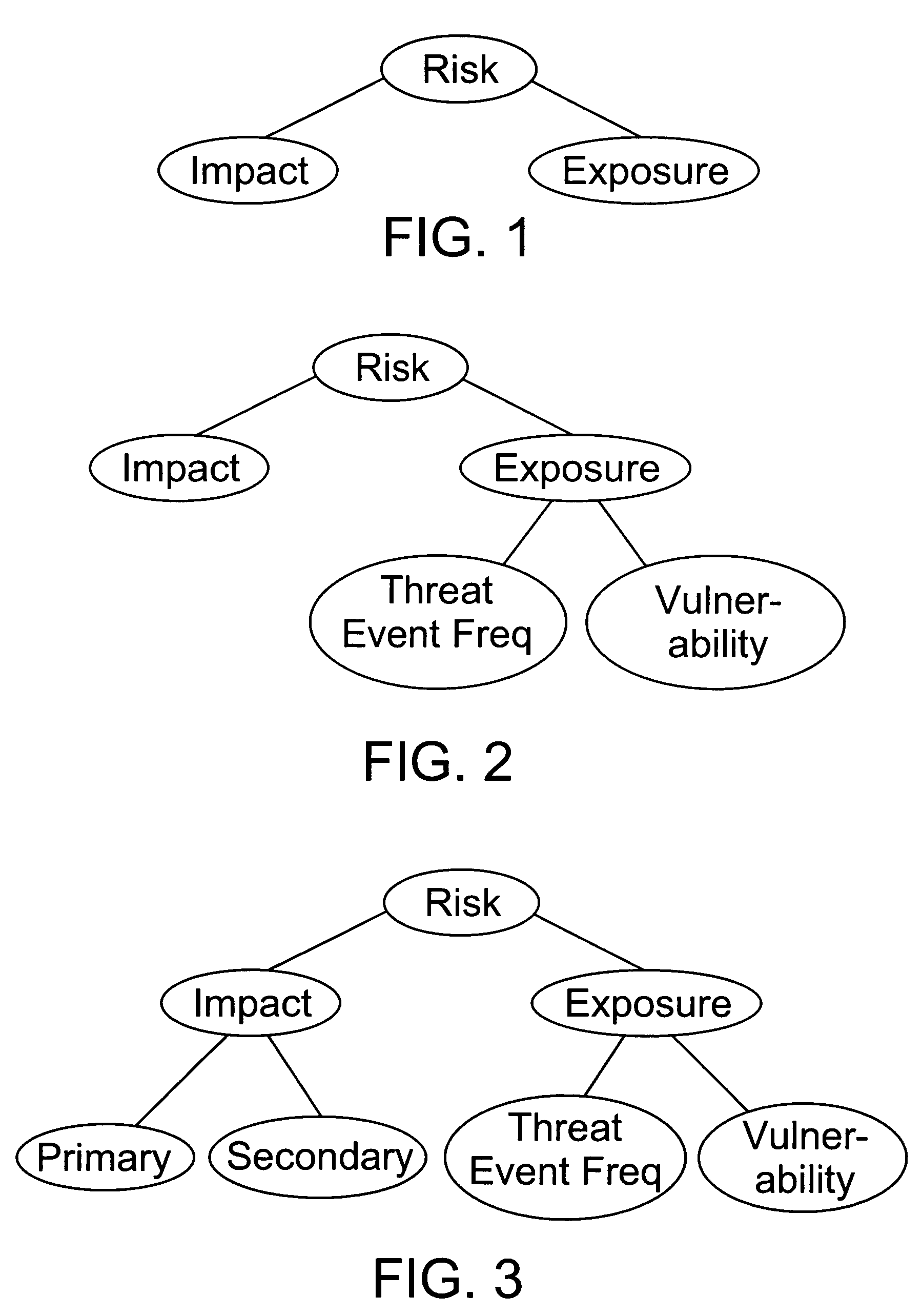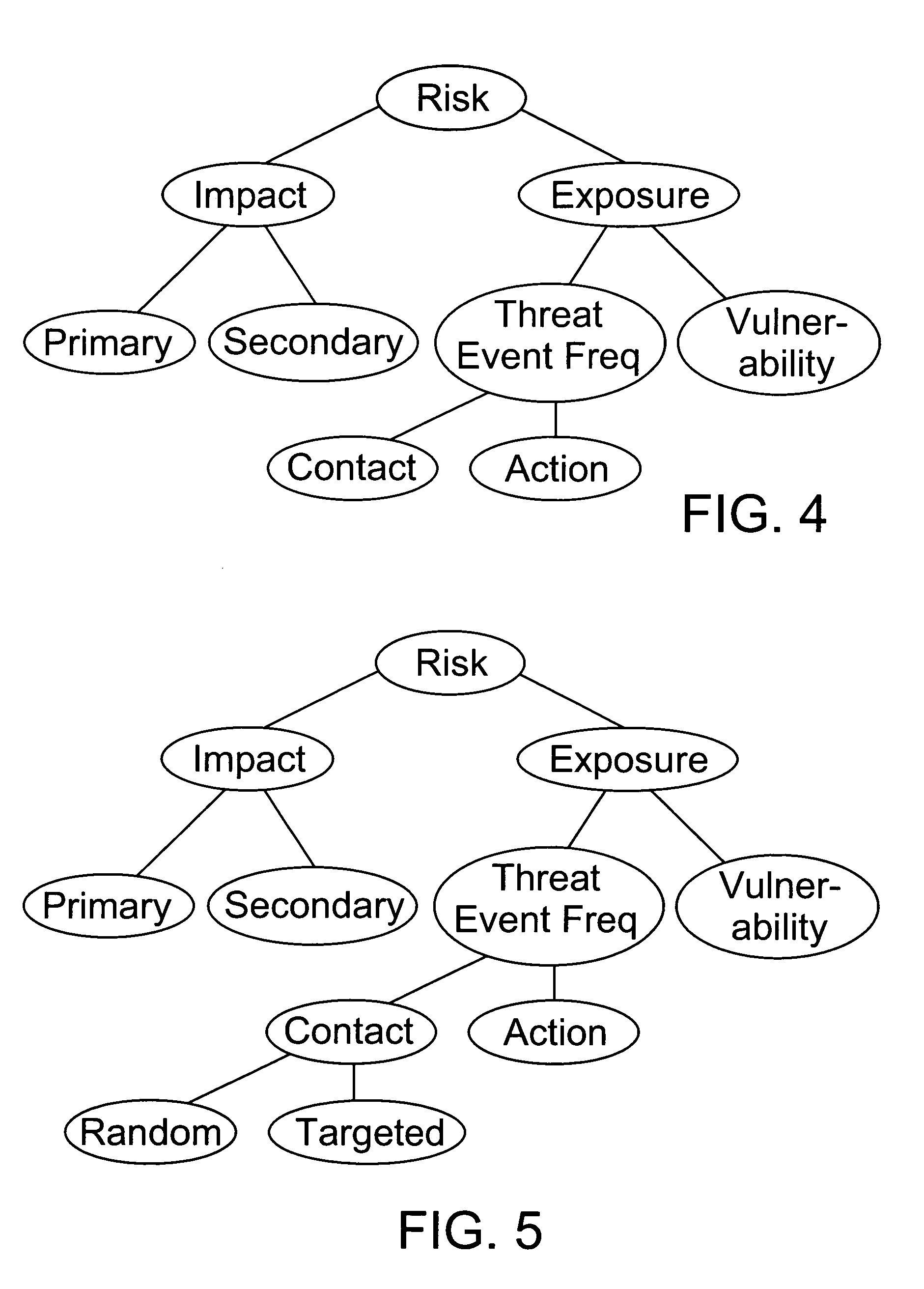Factor analysis of information risk
a technology of information risk and factor analysis, applied in the field of information security, can solve problems such as the possibility of harm and probable loss associated with the harmful even
- Summary
- Abstract
- Description
- Claims
- Application Information
AI Technical Summary
Benefits of technology
Problems solved by technology
Method used
Image
Examples
Embodiment Construction
[0049] The FAIR Framework. The FAIR framework describes the fundamental components and factors that comprise subject environments, as well as the relationships that drive the interactions between these components and factors. The manner in which these components and factors have been defined provides a framework that is highly flexible and entirely agnostic with regard to specific technologies or industries. A simple analogy to this framework is the atomic elements that make up our physical world. By defining and combining these atomic elements, one is able to describe and model complex molecules, which then can be further combined to describe and model higher-level subjects. If one can also understand the interactions of the elements at the various levels of abstraction, one is able to model not only the structure of complex subjects, but also their capabilities and tendencies. Through this modeling, one can make reasoned predictions of how certain combinations of elements will act...
PUM
 Login to View More
Login to View More Abstract
Description
Claims
Application Information
 Login to View More
Login to View More - R&D
- Intellectual Property
- Life Sciences
- Materials
- Tech Scout
- Unparalleled Data Quality
- Higher Quality Content
- 60% Fewer Hallucinations
Browse by: Latest US Patents, China's latest patents, Technical Efficacy Thesaurus, Application Domain, Technology Topic, Popular Technical Reports.
© 2025 PatSnap. All rights reserved.Legal|Privacy policy|Modern Slavery Act Transparency Statement|Sitemap|About US| Contact US: help@patsnap.com



